Abstract
Pigeons were exposed to the concurrent-chains procedure in two experiments designed to investigate the effects of unequal numbers of reinforcers on choice. In Experiment 1, the pigeons were indifferent between long and short durations of access to variable-interval schedules of equal reinforcement density, but preferred a short high-density terminal link over a longer, lower density terminal link, even though in both sets of comparisons there were many more reinforcers per cycle in the longer terminal link. In Experiment 2, the pigeons preferred five reinforcers, the first of which was available after 30 sec, over a single reinforcer available at 30 sec, but only when the local interval between successive reinforcers was short. The pigeons were indifferent when this local interval was sufficiently long. The pigeons' behavior appeared to be under the control of local terminal-link variables, such as the intervals to the first reinforcer and between successive reinforcers, and was not well described in terms of transformed delays of reinforcement or reductions in average delay to reinforcement.
Keywords: choice, concurrent chains, number of reinforcers, delay of reinforcement, key peck, pigeons
Full text
PDF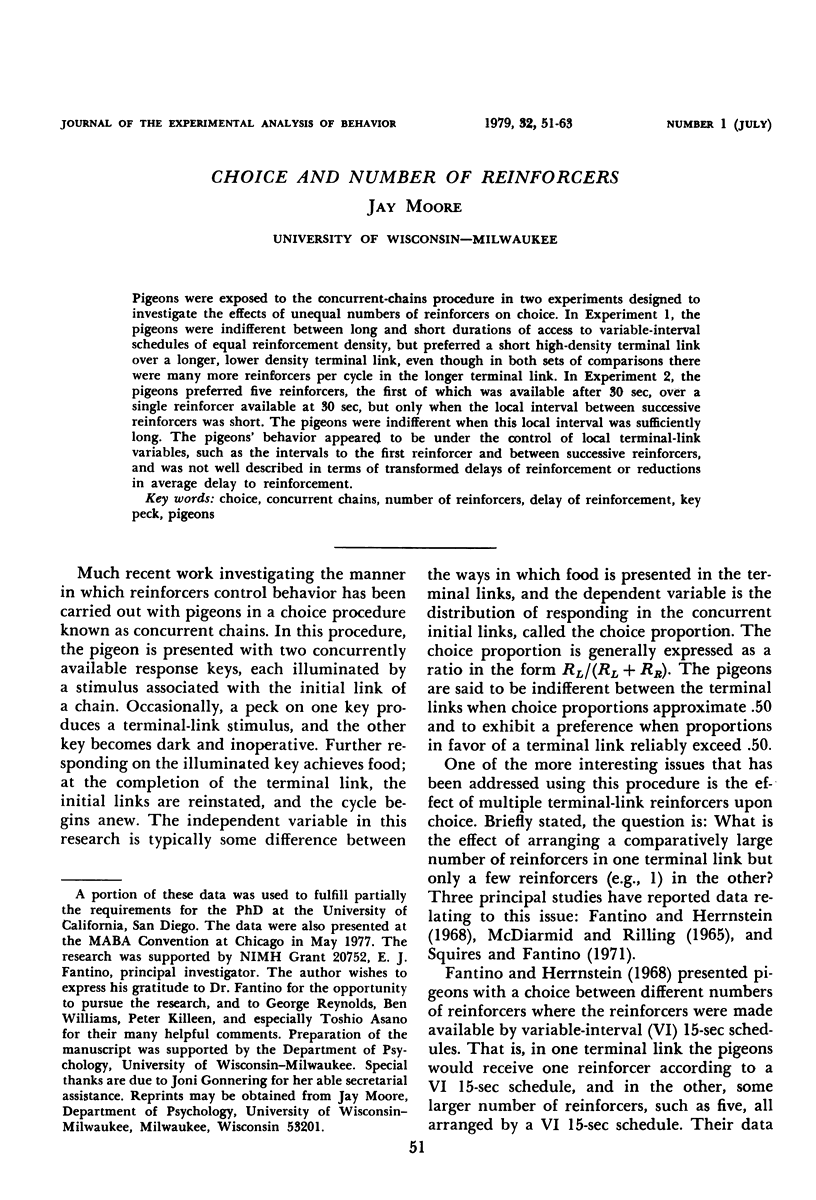
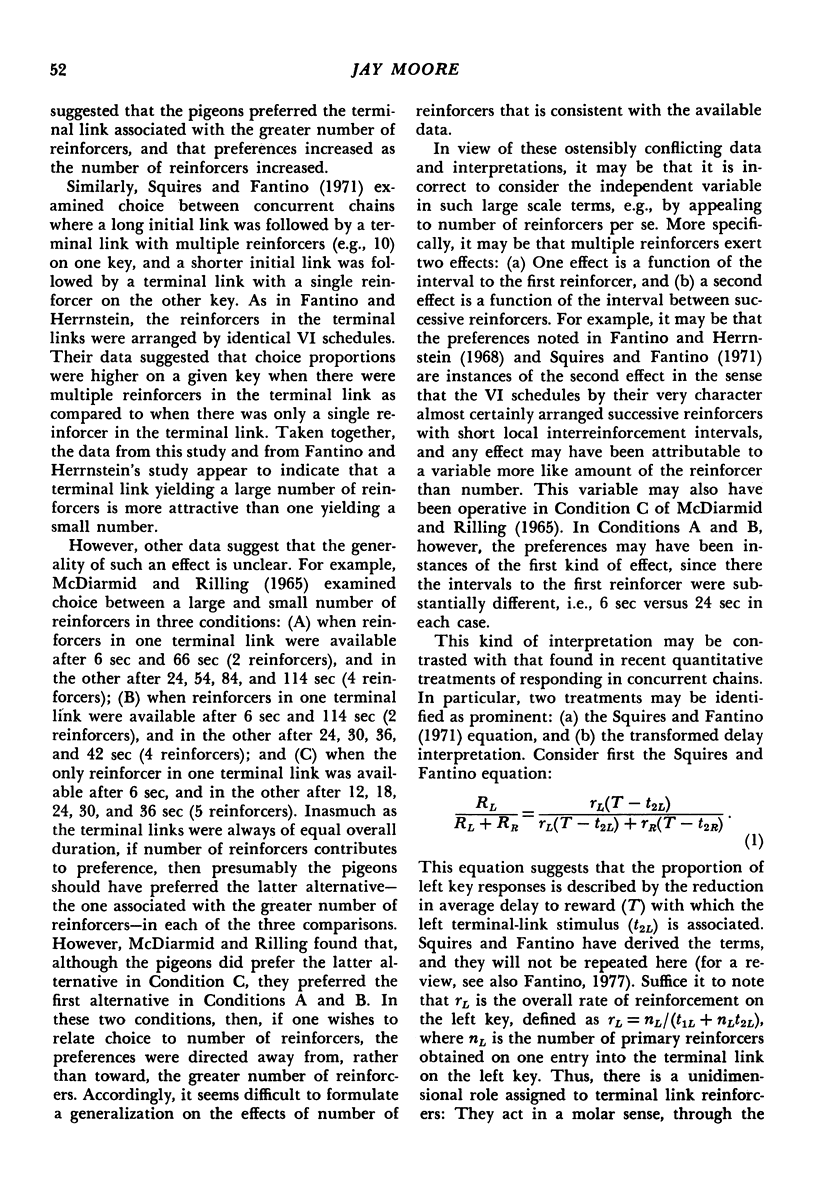
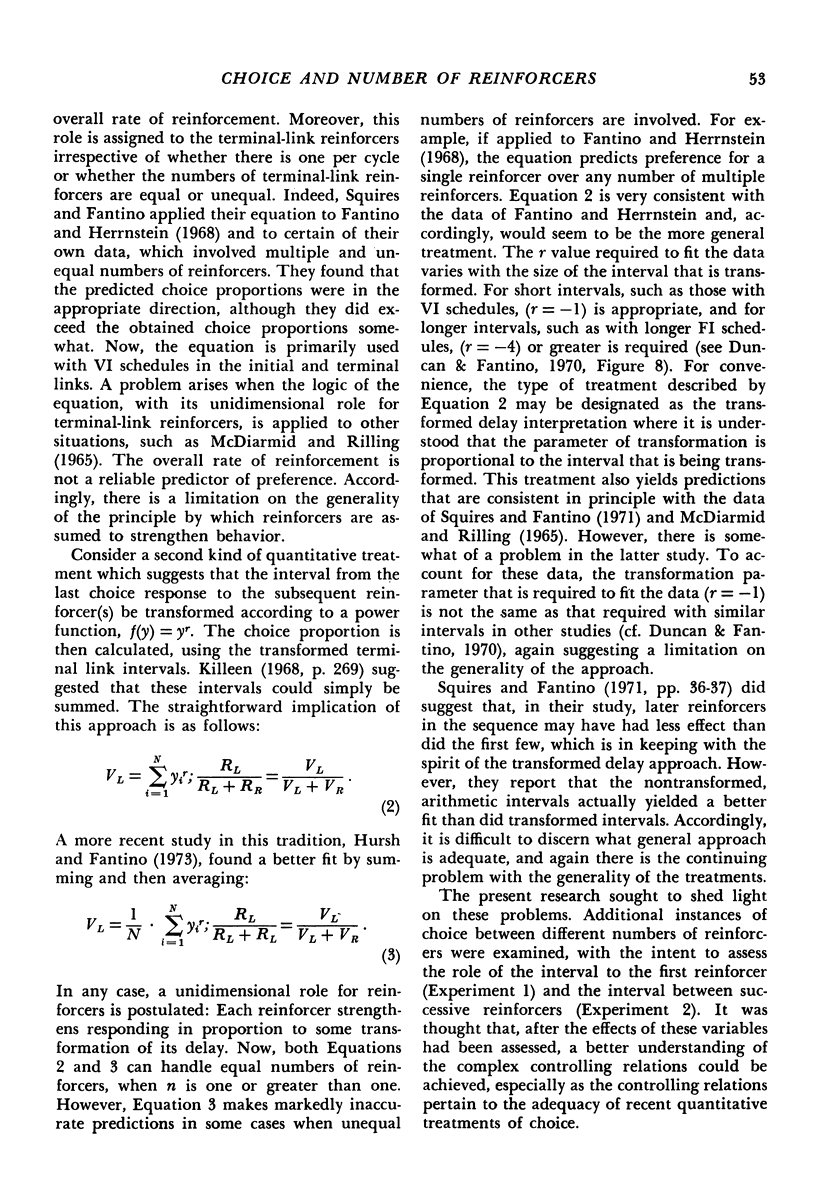
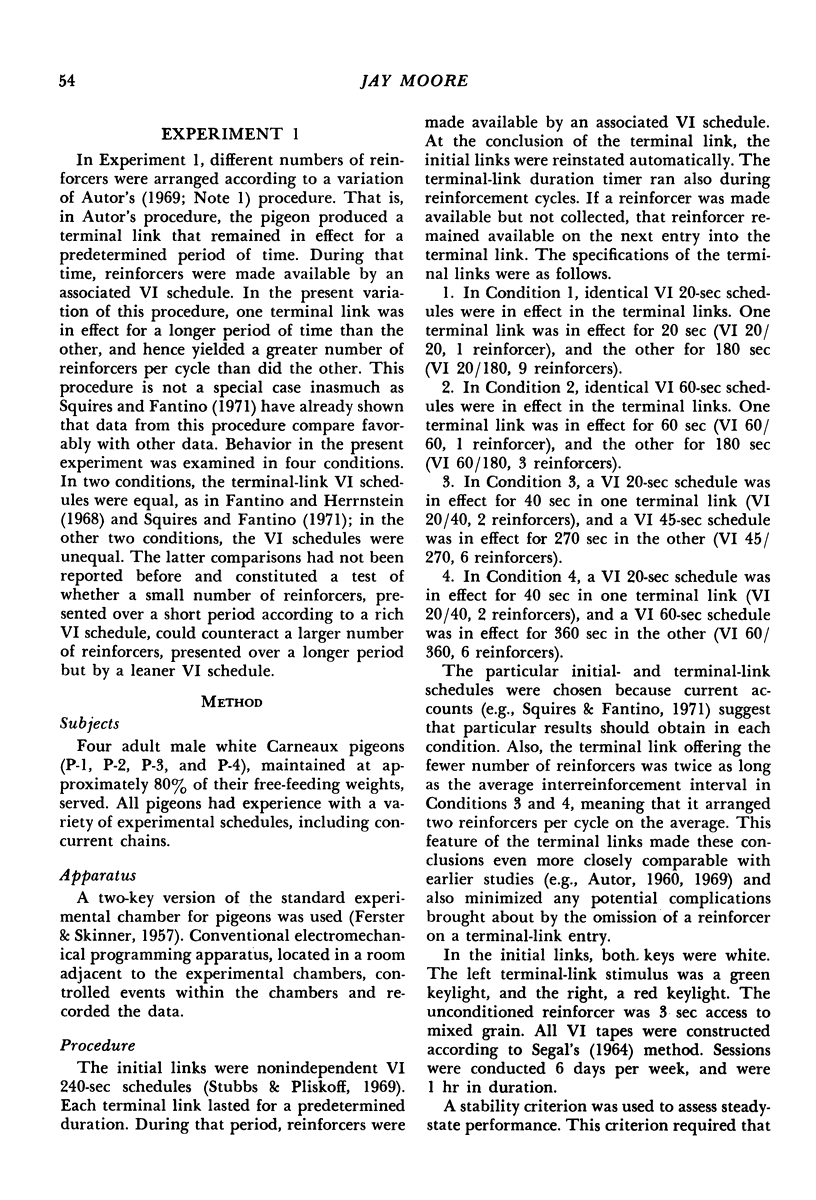
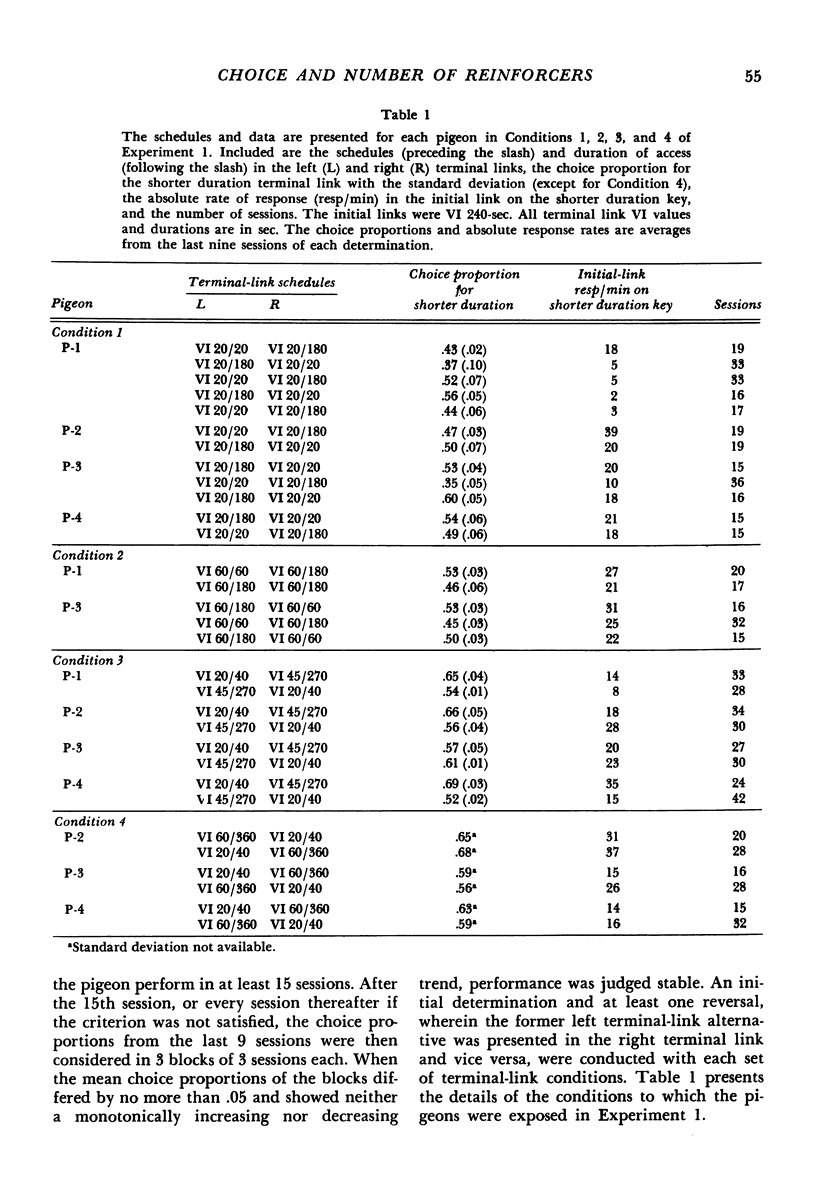
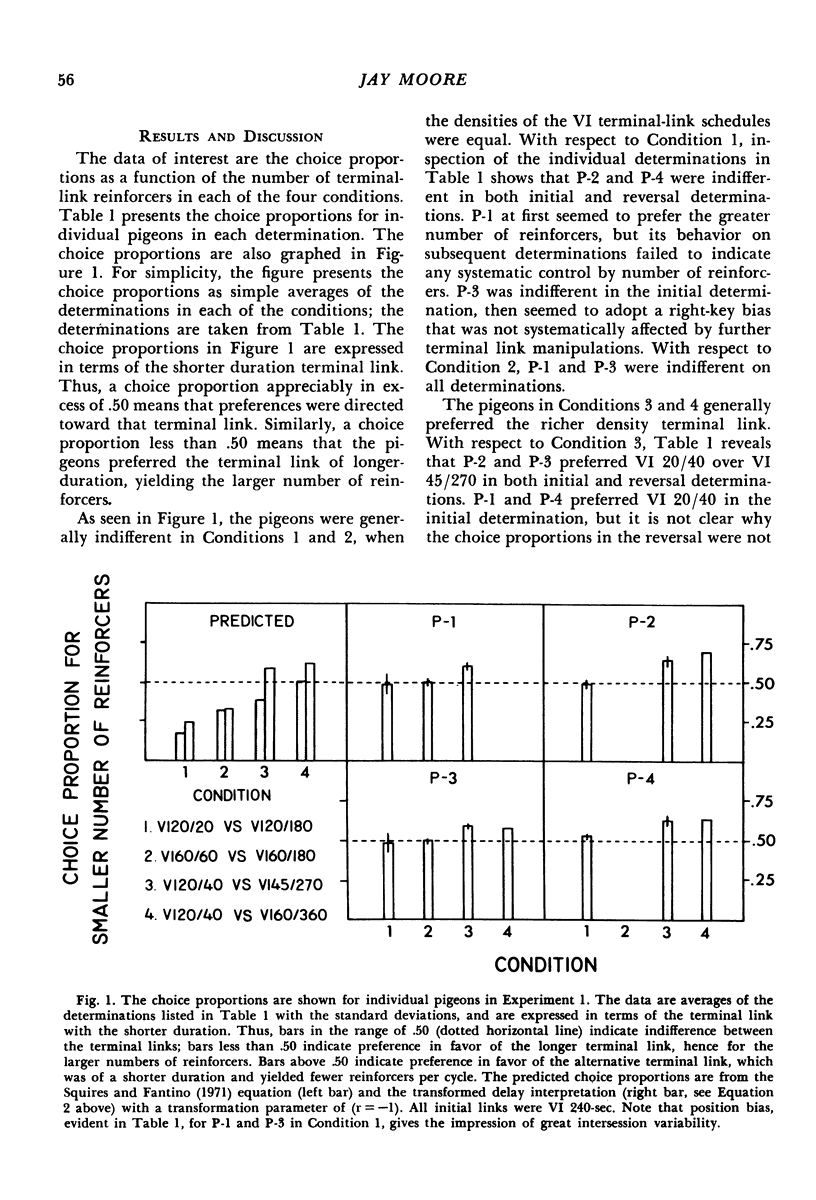
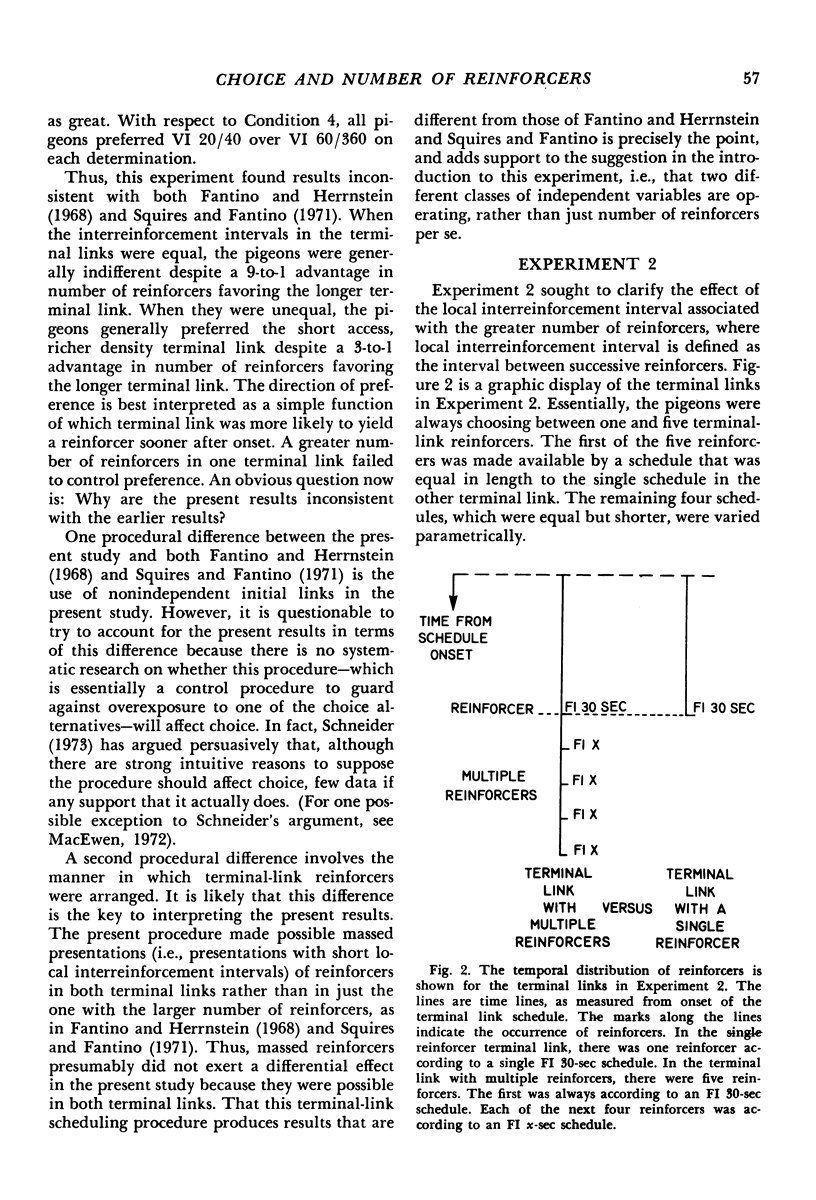
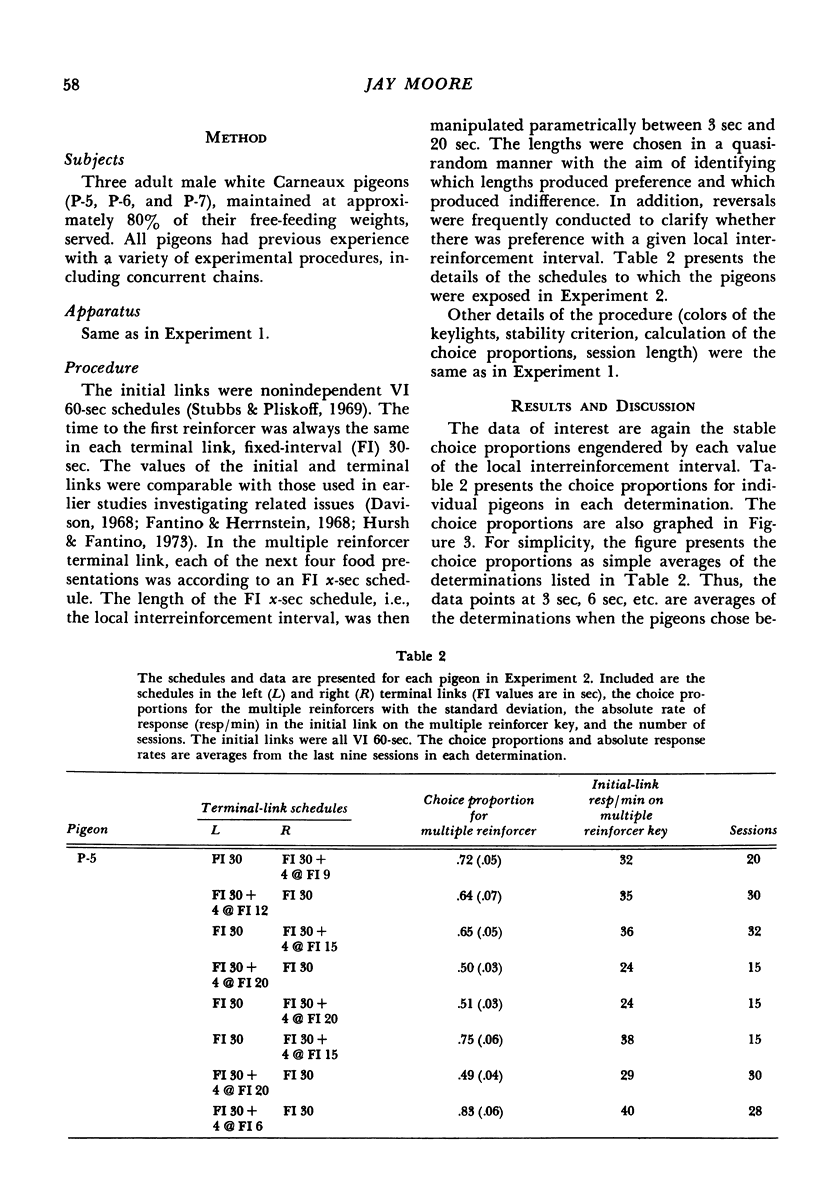
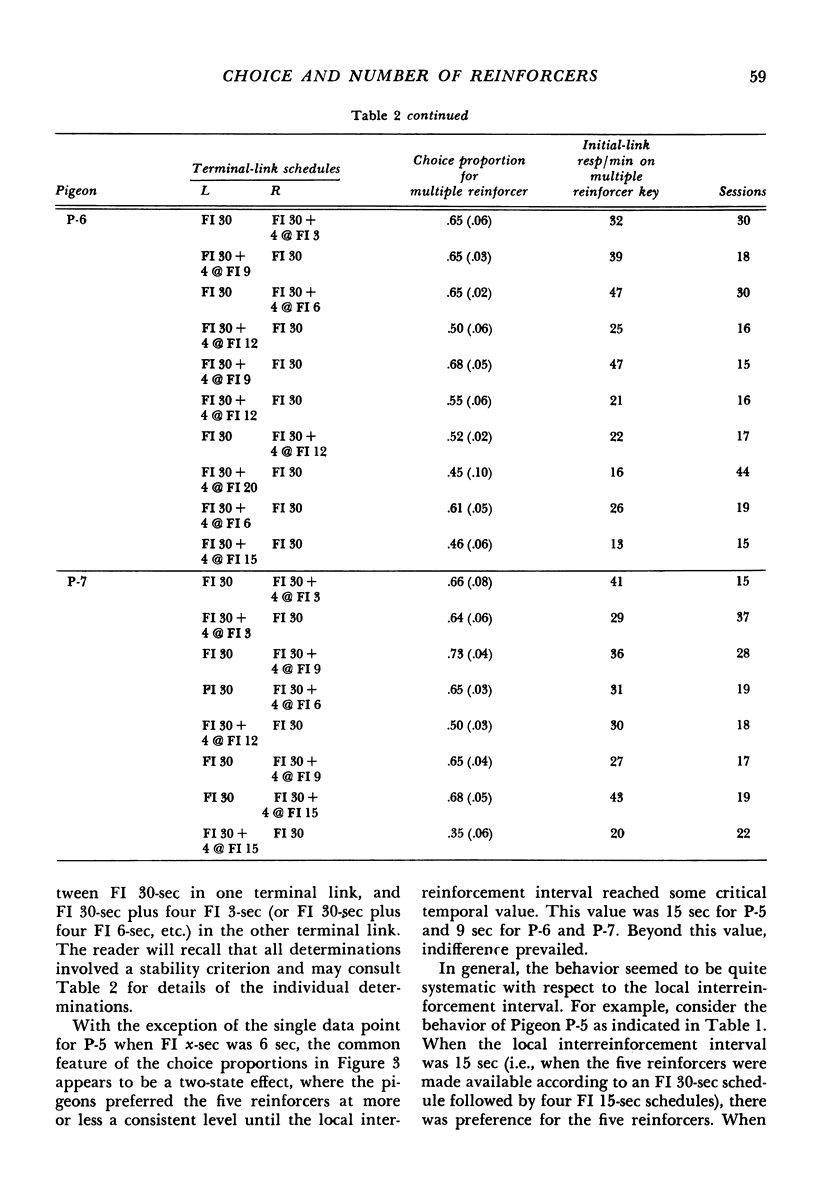
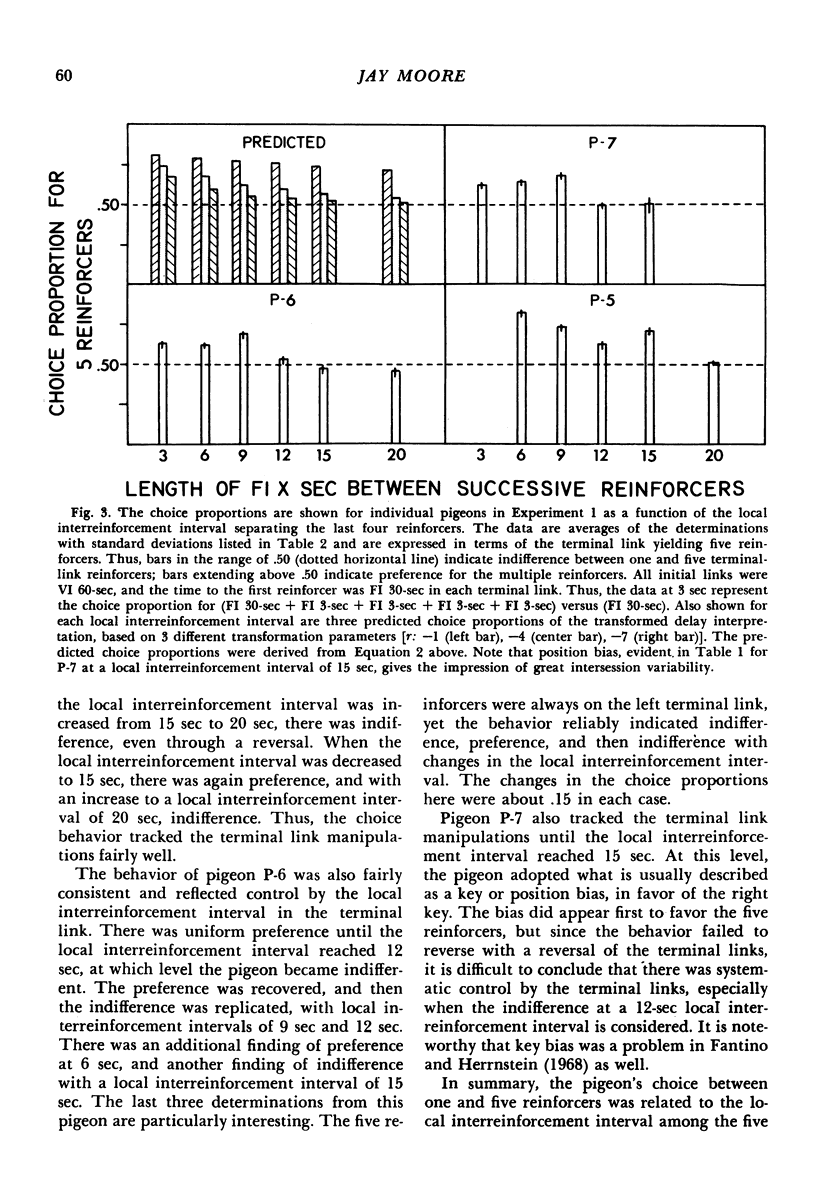
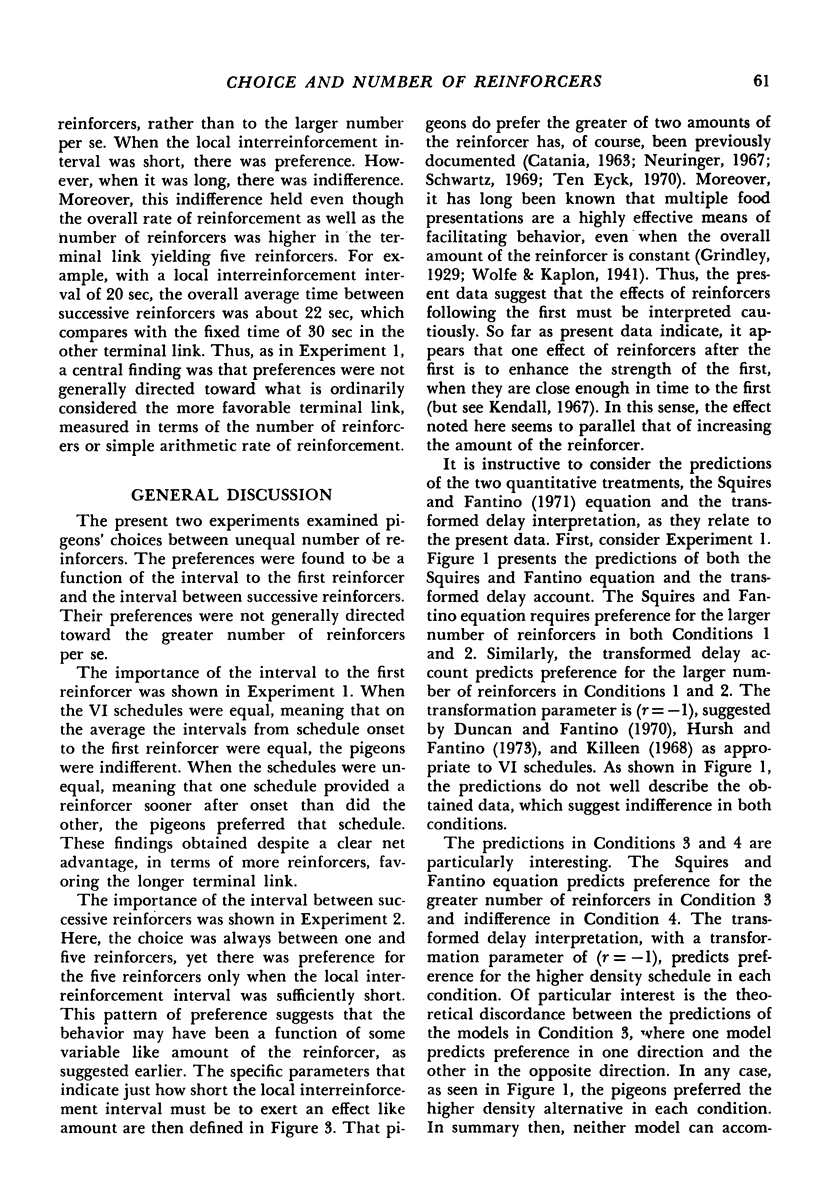
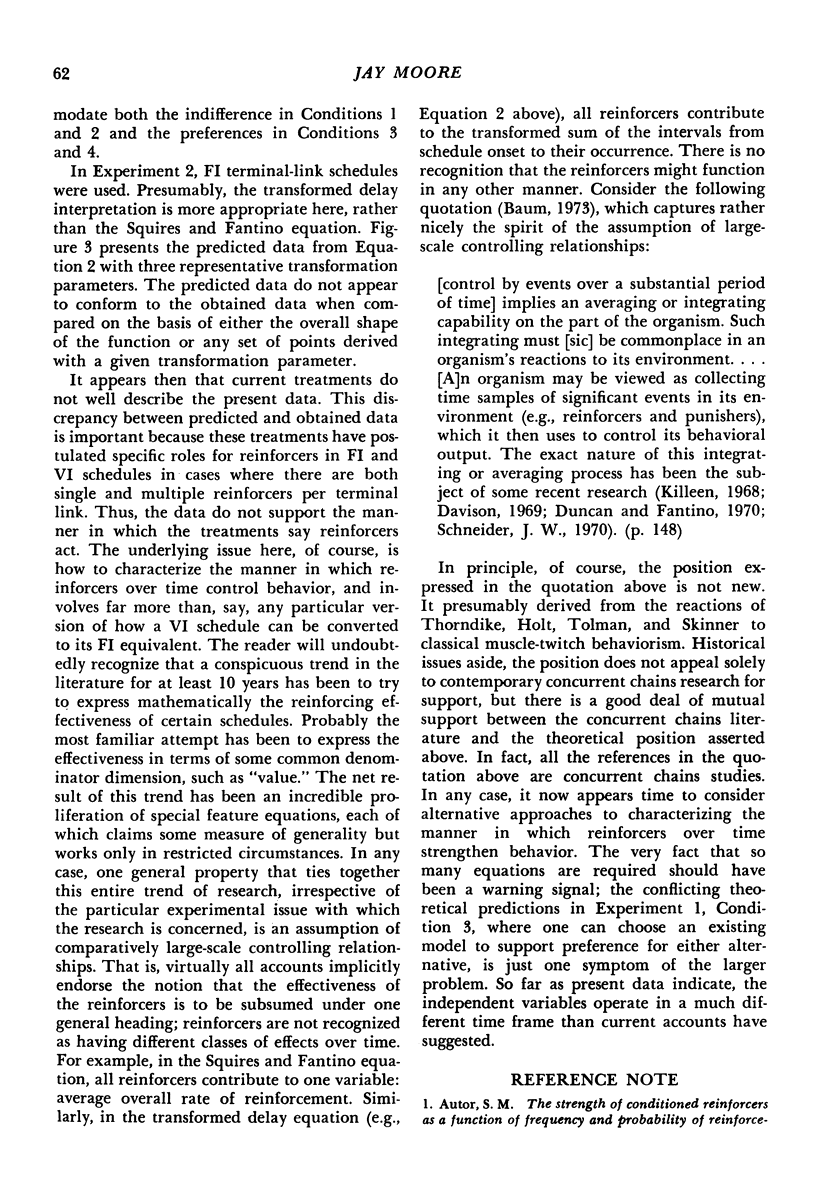
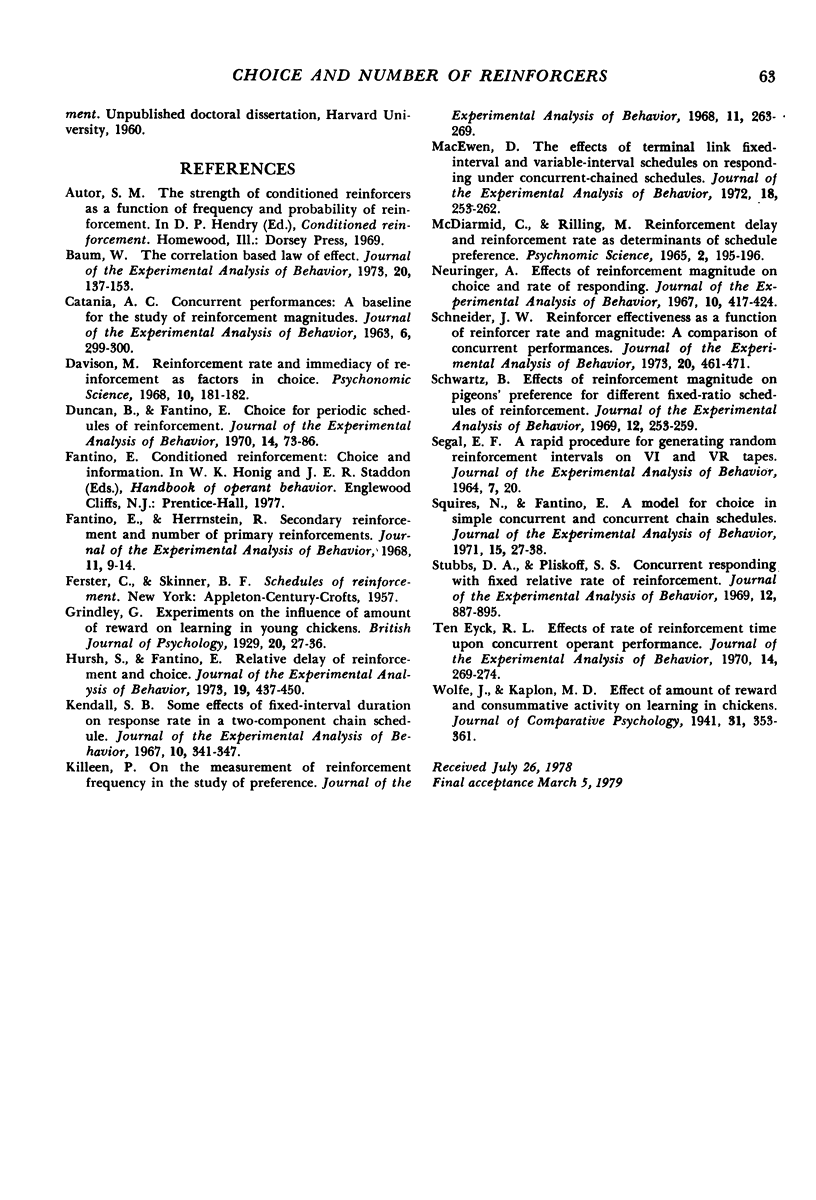
Selected References
These references are in PubMed. This may not be the complete list of references from this article.
- Baum W. M. The correlation-based law of effect. J Exp Anal Behav. 1973 Jul;20(1):137–153. doi: 10.1901/jeab.1973.20-137. [DOI] [PMC free article] [PubMed] [Google Scholar]
- CATANIA A. C. Concurrent performances: a baseline for the study of reinforcement magnitude. J Exp Anal Behav. 1963 Apr;6:299–300. doi: 10.1901/jeab.1963.6-299. [DOI] [PMC free article] [PubMed] [Google Scholar]
- Duncan B., Fantino E. Choice for periodic schedules of reinforcement. J Exp Anal Behav. 1970 Jul;14(1):73–86. doi: 10.1901/jeab.1970.14-73. [DOI] [PMC free article] [PubMed] [Google Scholar]
- Fantino E., Herrnstein R. J. Secondary reinforcement and number of primary reinforcements. J Exp Anal Behav. 1968 Jan;11(1):9–14. doi: 10.1901/jeab.1968.11-9. [DOI] [PMC free article] [PubMed] [Google Scholar]
- Hursh S. R., Fantino E. Relative delay of reinforcement and choice. J Exp Anal Behav. 1973 May;19(3):437–450. doi: 10.1901/jeab.1973.19-437. [DOI] [PMC free article] [PubMed] [Google Scholar]
- Kendall S. B. Some effects of fixed-interval duration on response rate in a two-component chain schedule. J Exp Anal Behav. 1967 Jul;10(4):341–347. doi: 10.1901/jeab.1967.10-341. [DOI] [PMC free article] [PubMed] [Google Scholar]
- Killeen P. On the measurement of reinforcement frequency in the study of preference. J Exp Anal Behav. 1968 May;11(3):263–269. doi: 10.1901/jeab.1968.11-263. [DOI] [PMC free article] [PubMed] [Google Scholar]
- Macewen D. The effects of terminal-link fixed-interval and variable-interval schedules on responding under concurrent chained schedules. J Exp Anal Behav. 1972 Sep;18(2):253–261. doi: 10.1901/jeab.1972.18-253. [DOI] [PMC free article] [PubMed] [Google Scholar]
- Neuringer A. J. Effects of reinforcement magnitude on choice and rate of responding. J Exp Anal Behav. 1967 Sep;10(5):417–424. doi: 10.1901/jeab.1967.10-417. [DOI] [PMC free article] [PubMed] [Google Scholar]
- SEGAL E. F. A RAPID PROCEDURE FOR GENERATING RANDOM REINFORCEMENT INTERVALS ON VI AND VR TAPES. J Exp Anal Behav. 1964 Jan;7:20–20. doi: 10.1901/jeab.1964.7-20. [DOI] [PMC free article] [PubMed] [Google Scholar]
- Schneider J. W. Reinforcer effectiveness as a function of reinforcer rate and magnitude: a comparison of concurrent performances. J Exp Anal Behav. 1973 Nov;20(3):461–471. doi: 10.1901/jeab.1973.20-461. [DOI] [PMC free article] [PubMed] [Google Scholar]
- Schwartz B. Effects of reinforcement magnitude on pigeons' preference for different fixed-ratio schedules of reinforcement. J Exp Anal Behav. 1969 Mar;12(2):253–259. doi: 10.1901/jeab.1969.12-253. [DOI] [PMC free article] [PubMed] [Google Scholar]
- Squires N., Fantino E. A model for choice in simple concurrent and concurrent-chains schedules. J Exp Anal Behav. 1971 Jan;15(1):27–38. doi: 10.1901/jeab.1971.15-27. [DOI] [PMC free article] [PubMed] [Google Scholar]
- Stubbs D. A., Pliskoff S. S. Concurrent responding with fixed relative rate of reinforcement. J Exp Anal Behav. 1969 Nov;12(6):887–895. doi: 10.1901/jeab.1969.12-887. [DOI] [PMC free article] [PubMed] [Google Scholar]
- Ten Eyck R. L. Effects of rate of reinforcement-time upon concurrent operant performance. J Exp Anal Behav. 1970 Nov;14(3):269–274. doi: 10.1901/jeab.1970.14-269. [DOI] [PMC free article] [PubMed] [Google Scholar]


